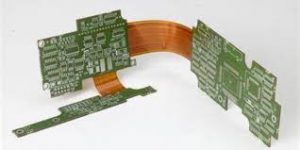Preventing Cracking in Flexible PCB Boards During Bending
Flexible PCB Boards During Bending
If your PCB is flexed in any way during assembly or operation, it can experience a variety of stresses. These stresses can result in cracking, breaking and other forms of damage. These stressors can include a variety of factors, from the materials used to the bending requirements of your PCB. In order to avoid these stresses, there are a few things that you can do to make sure that your flex PCB will perform as intended.
One of the most common mistakes that leads to a crack in a flex circuit is using a bend radius that is too tight. A tight bend radius causes the flex circuit to stretch and compress, which can cause stress points to form. This can also lead to the copper layer fracturing and breaking. To avoid this, you can ensure that your flex PCB has a large enough bend radius.
Another way to prevent a crack in your flexible pcb board is to use different materials than those traditionally used on rigid PCBs. For example, you can use FR4 or metal (typically aluminum or stainless steel) as stiffeners to give your flex circuit extra mechanical support. You can also incorporate anchors and teardrops into your PCB to reduce stress concentration in key areas. These can help to prevent pad lifting and to eliminate stress points from occurring where they shouldn’t.

Preventing Cracking in Flexible PCB Boards During Bending
When designing your flex circuit, you can also choose to use either panel plating or pad-only-plating, known as button plating. Pad-only plating uses a copper thickness that is thinner than traditional panel plating and allows for more flexibility in your traces. Additionally, it can also improve etch yields in small traces and enable more control over impedance. Lastly, pad-only-plating can help to reduce costs by reducing the amount of copper that is needed for the traces.
A final way to prevent a crack in your flex circuit is by ensuring that you have a proper alignment of your PCB components. This includes proper solder mask alignment and proper polarity of your components. This can prevent the failure of your flex circuit during assembly.
Flex PCBs require a lot more handling than rigid boards, so they are more prone to damage. To minimize this, it is important to follow a few rules that are exclusive to flex PCBs. For instance, avoid 90-degree bends as these can increase the chance of circuit damage. It is also a good idea to place conductors that are smaller than 10 mils inside the neutral bend axis, as they tend to tolerate compression better than stretching. Finally, you should also try to keep special copper features and vias away from the transition region of your rigid-flex/flex PCB.
In addition to following these rules, you should also use proper design techniques that are specific to flex circuits. This includes a proper layout, proper drill-to-copper distances and the use of the correct stiffeners. Additionally, you should use a high-temperature epoxy to ensure that your flex circuit will be able to withstand the stress of manufacturing and bending.